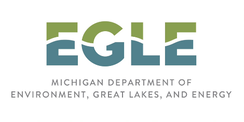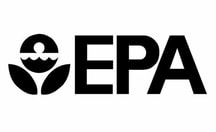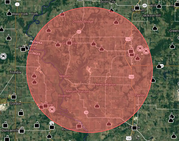even months after an incident occurred that can affect the “days away,” “transfer” and other information on the log. Tier 2 Reports – Has your company started any new processes this past year? Are there any new chemicals stored on site? If so, determine the quantities and how and where the materials are managed on site. Now is a good time to update your chemical inventory so that you are ready and able to prepare your Tier 2 Report. Tier 2 Reports are due March 1, 2021. And, don’t forget, a thorough and accurate chemical inventory supports other programs like Right-to-Know, oil and chemical spill prevention (SPCC and PIPP) and storm water pollution prevention. Air Permit Reports – Depending on your emission units and permit terms and conditions, you may have monthly, quarterly, semi-annual or annual reports to submit. It is a good idea to check in with the staff responsible for collecting data to ensure it is complete and accurate and that the data will be available when needed. Toxic Release Inventory – TRI reports aren’t due until July 1st. And although you still have some time, it is always a good idea to get a jump start on collecting necessary data, which can be time consuming and cumbersome. If you already know that chemical quantities exceed thresholds, start ordering 2020 data or reports from appropriate company departments and vendors now so you have plenty of time to assemble and analyze the data to prepare the TRI report and submit it on time. If you are unsure whether TRI Reporting is required, the first step is to conduct an Applicability Determination to identify whether regulatory thresholds have been exceeded. This activity examines the raw materials, processes and wastes generated by a facility and compares the results with the regulatory thresholds. If thresholds are exceeded, then a TRI report Form A or Form R are required. Online Reporting Access – Just like the fire department wants you to check the batteries in the smoke detectors at home during the New Year, it is also a great time to check your usernames and passwords to make sure they are current and still work so that your online access is not interrupted when you go to enter your data. Some agencies even require you to change your password annually. The new year is also a good time to make sure that everyone at the facility involved in the reporting process still knows their login information and how to use it. Getting these items resolved now will help avoid headaches as you approach reporting deadlines. If you have questions about reporting or applicability of regulations,
give us a call at (231) 288-1076. We are happy to help!  Believe it or not, Michigan is in the process of adopting the federal Hazardous waste Generator Improvement Rule (GIR) sometime this Spring. Now I know what you’re thinking, Trump was supposed to get rid of all those pesky hazardous waste rules. Well, he is still working on that, but in the meantime the Michigan legislature is doing something that makes sense for the hazardous waste management community. The GIR became effective (as far as the feds go) back in May 30, 2017. EGLE is off the hook for adopting the rule until the Michigan legislature adopts the rule which is currently in the works. No, we still don’t have an effective date for Michigan’s version of the rules, but it is hoped that EGLE will know in the next few months. This final rule includes over 60 changes to the GIR regulations that clarify existing requirements, increase flexibility, and improve environmental protection. Some changes reorganize the regulations or make minor technical corrections. Here are some of the highlights: Episodic Waste Events: Allowing a very small quantity generator (VSQG, formerly CESQG) or a small quantity generator (SQG) to maintain its existing generator category in the case of an event in which the VSQG or SQG generates a quantity of hazardous waste in a calendar month that would otherwise bump them into a more stringent generator regulatory category. We have worked with clients as they wrestled with the old rule after they performed a cleanup, plant maintenance, found obsolescent chemicals on their premises, or they made changes to operations that left them with a large amount of chemicals they no longer needed and it threw them over the limits. Allowing episodic waste events will be a welcome change. Waste Co-Mingling: This rule provides some cost savings to companies by allowing a VSQG to send its hazardous waste to a sister company (with the same owner/operator) so that it can be consolidated with the larger facility’s waste streams and then be sent to a TSDF. Emergency Response Plan Notifications: The rule includes Local Emergency Planning Committees among those organizations with which a generator may make response arrangements. Quick Reference Guides: The GIR requires that new and existing LQGs submit quick reference guides to local emergency responders. The quick reference guides are intended to provide easy access to key information during an event. SQG Re-Notification: SQGs will be required re-notify EGLE every four years regarding their generator status. Currently, SQGs only notify once under the current system. Labeling and Marking Containers: GIR revises the regulations for the labeling and marking of containers and tanks so that these labels and markings clearly indicate the hazards of the waste contained inside the container. Keep up on the latest regarding GIR by checking out the EGLE GIR web page. We’ll also keep an eye on it and report back in future newsletters. The USEPA published a final rule, entitled, “Management Standards for Hazardous Waste Pharmaceuticals and Amendment to the P075 Listing for Nicotine” in the Federal Register on February 22, 2019. According to the USEPA announcement, the final rule establishes cost-saving, streamlined standards for handling hazardous waste pharmaceuticals to better fit the operations of the healthcare sector while maintaining protection of human health and the environment.
This final rule will help protect drinking and surface water reducing the amount of hazardous waste pharmaceuticals entering waterways by 1,644 to 2,300 tons on an annual basis. To accomplish this the rule will prohibit disposal of pharmaceuticals in the sanitary sewer by all facilities subject to the rule. This action will help address the issue highlighted by a growing body of publicly available studies documenting the presence of pharmaceuticals in drinking and surface waters as well as their negative impacts to aquatic and riparian ecosystems. In addition, FDA-approved, over-the-counter nicotine replacement therapies (i.e., nicotine patches, gums and lozenges) will no longer be considered hazardous waste when discarded. This will result in significant cost savings and burden reduction in the management of these types of nicotine wastes. Finally, the final rule reaffirms EPA’s long-standing policy that non-prescription pharmaceuticals and other unsold retail items that have a reasonable expectation of being legitimately used/reused or reclaimed are not solid waste. It also provides regulatory certainty that the Resource Conservation and Recovery Act (RCRA) applies when healthcare facilities send unused, unsaleable prescription hazardous waste pharmaceuticals to reverse distributors to receive manufacturer credit. Simultaneously, the rule incorporates flexibilities to accommodate current reverse distribution business practices to facilitate its implementation. SRM will keep you posted on this important development. July 1st is right around the corner. We hope most of you are either done or well on your way to completing your TRI number crunching. While there is still plenty of time to get the TRI reports completed, keep in mind there are some potential pitfalls that can stop you in your tracks:
Due Diligence - TRI Applicability Determination If you are a small but growing company, don’t ignore the TRI reporting again this year because you haven't had to report in the past. Do your annual Due Diligence and prepare some calculations and analyses that you can keep in a compliance folder for when MDEQ or USEPA come to visit. This way you can easily demonstrate whether or not your facility is required to report. Your facility is required to report if it meets ALL three of these threshold criteria:
SRM can help you with your TRI determination. USEPA also has resources to help you at their website. TRI-Me Web Access USEPA requires companies to update their passwords. If you are running short on time or the certifying official is going out of town on a long business trip in two days, updating crucial information can pose a problem. What if you need to change the certifying official due to corporate reorganization? Changing information in the TRI-ME system can take a week or two to complete and can be disruptive. So you shouldn’t wait until the last minute to update your information. A good rule of thumb is to get onto the CDX system sooner rather than later and make sure you and your certifying official can access the CDX system and your TRI forms. Update your passwords as necessary. Check Your Formulas If you are like many TRI preparers, you use spreadsheets to estimate chemical usage and emissions. As we enter or remove data from year to year we can move linked data cells around the worksheet causing errors in the calculations. In addition, “Fat-Finger Syndrome” is still incurable and people often delete or move links without even knowing it. So, take some time every year to examine your formulas and links between worksheets to ensure data integrity. Contact SRM if you have questions about TRI applicability or reporting. We hare happy to help.  Chemical Accident Prevention is high on everyone’s priority list. The EPA even has a rule for it. The Risk Management Plan (RMP) Rule (40 CFR Part 68) governs accident prevention under Section 112(r) of the Clean Air Act Amendments. The “RMP Rule” established regulations that facilitate accident prevention at facilities that use certain highly hazardous chemicals listed in the regulation. For example, many facilities that use anhydrous ammonia are required to prepare and implement an RMP at their location, and must submit the RMP to the EPA every 5 years. Whoa, you say. What’s in an RMP? An RMP is a set of documents and procedures that govern the following actions at a facility when that facility has the highly hazardous chemicals in a process in quantities above a Threshold Quantity. For ammonia refrigeration the threshold is 10,000 pounds.
Why would a facility want to prepare an RMP? First of all, because these plans provide your local police, fire and emergency response personnel with information needed so that they can respond to an incident at your facility in the most effective way possible. And, Secondly, because these plans must be submitted to EPA. They must also be resubmitted every five years. FUN FACT Did you know that the Environmental Protection Agency implements the Risk Management Plan (RMP) Rule in Michigan – not the Michigan Department of Environmental Quality?  Did you think that once you “complete” your Risk Management Planning (RMP) and Process Safety Management (PSM) programs there is no more work to be done? Often, regulatory requirements are thought of as one and done. You prepare the document and its done, you don’t have to look at it again for five years. Not in this case. These programs require vigilance, especially if the processes at your facility often change. For starters, both PSM and RMP include periodic actions that must be completed regularly. Here’s an abbreviated listing:
So, as you can see with this truncated list of periodic requirements, there is a lot to do after the main part of the program is established. I will say this, it gets a little easier as personnel understand what is expected of them and adopt a PSM/RMP safety culture. One final thought. Remember to document all of your reviews and date all of your changes. The old saying still holds true. If it wasn’t documented and you can’t prove a review took place, it didn’t happen.  Once again SRM is attending and hosting a booth at the semi-annual Michigan Environmental Compliance Conference (MECC) located at the Lansing Center on June 12 and 13, 2018. There will be over 70 educational sessions, 38 exhibitors, and 18 DEQ program exhibitors. Click here for more information. Come visit SRM at Booth 35. We hope to see you there!! The next Hazardous Waste Biennial Report deadline is March 1, 2018 and covers activities during calendar year 2017. The Michigan DEQ will not be sending biennial packets to waste generators. Instead, Large Quantity Generators and TSDFs will be required to report using the federal forms and instructions.
While the MDEQ will accept paper copies, it is encouraging facilities to submit their Biennial Report data electronically through the Biennial Report component of the USEPA RCRAInfo Industry Application (RIA). The RCRAInfo login page can be used to set up a RCRAInfo account and login. The web site provides guidance and information to be followed to prepare and submit the report. Additional information for submitting Biennial Reports to the MDEQ either electronically or on paper can be found at the MDEQ web site for Biennial Reporting.  An article provided by: Vicki Schneider, Principal Consultant at Schneider Risk Management As we shared with you in a previous article, the U.S. EPA (EPA) issued an Enforcement Alert (February 2015) describing how facilities using anhydrous ammonia are under scrutiny by EPA. The Alert primarily addressed facilities that contain anhydrous ammonia above the threshold quantity (TQ) of 10,000 lbs.; however, these warnings should not be ignored by those companies with systems under the TQ. The U.S. EPA (EPA) issued an Enforcement Alert in February 2015 entitled “Anhydrous Ammonia at Refrigeration Facilities Under Scrutiny by U.S. EPA.” This Enforcement Alert notes that the EPA has gathered evidence that suggests refrigeration facilities may not be properly managing their ammonia. It states that the “Alert is intended to inform industry that companies must take responsibility to prevent accidental releases of dangerous chemicals like anhydrous ammonia through compliance with CAA’s Chemical Accident Prevention Program (40 CFR 68).”
|
|


 RSS Feed
RSS Feed
